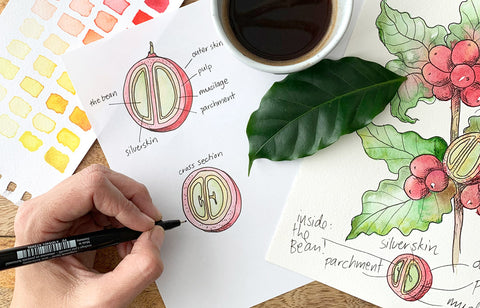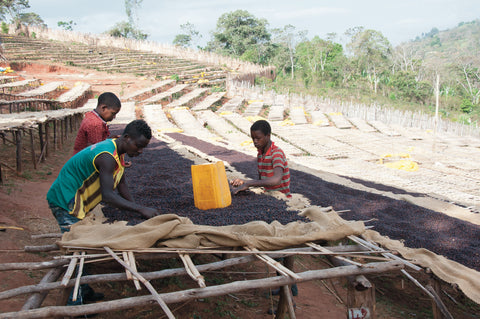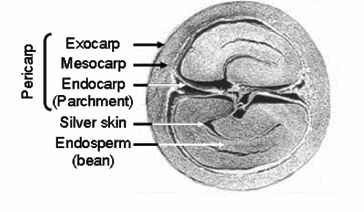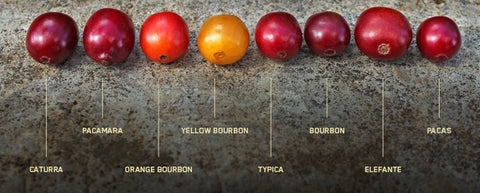Most of us have seen pictures of the bright red coffee cherries — the fruit of the coffee plant.
While they look pretty sweet, inside each one is reasonably thin skin and flesh layer encasing a pair of hard green coffee beans.
Many folks wonder whether you can actually eat these rosy red cherries. Sure you can! However, it requires a lot of munching to get small amounts of sweet flesh from those tooth-cracking beans, which is why we prefer to process and roast those green beans into that elixir of happiness we know as coffee!

The skin of the cherry is known as the exocarp. Beneath this is the mesocarp, more commonly known as the pulp.
Then comes the mucilage — the inner pulp layer — followed by a layer of pectin. But why do we care about all of these very technical-sounding layers?
Because between these layers are where the sugars lie, and these sugars play a major part in the fermentation process that happens during processing.
These processing methods may involve drying the beans with flesh on, which imparts a fruity sweetness or stripping the flesh to allow the characteristics of the bean to speak for themselves.
But what’s at the centre of it all? Beneath all the fruity layers is a pair of coffee beans, each wrapped in a silverskin and papery hull commonly known as the parchment.
Generally, the pulp and parchment are removed in the milling process. However, some growing regions keep the parchment on the bean (but that’s a whole other story we will visit in an upcoming post!)

How Does All of This Affect My Final Cup?
Removing the skin and mucilage from coffee beans is difficult, and there are a few processing methods used to do this.
The first and oldest coffee processing method is natural or ‘dry’ processing. It is still commonly used today in areas without reliable access to water and where the weather is consistently hot and dry (e.g. parts of Africa- the birthplace of coffee).
This processing method has a significant impact on what ends up in your cup and may vary from coffee type to coffee type.
Natural coffees leave the fruit on for the drying process, which imparts sweetness, fruit flavours and added body. The fruit is more easily removed as the flesh ferments beneath the skin, whilst the cherries lay out in the sun on drying patios or raised drying beds.
However, there are several environmental factors, such as excess rain and humidity, that make natural processing a riskier business. If done correctly, the resultant cup is superb.
Then, there are washed coffees. Washed coffees have the fruit flesh removed mechanically by de-pulping machines, which squeeze the cherries until the seeds pop out. These seeds are then sent to water-filled fermentation tanks.

Microbes and yeast assist in the breakdown of the mucilage layer over many hours or days. The beans are scrubbed mechanically for final mucilage removal.
The washed seeds are then dried in the sun on raised drying beds, concrete patios or via drying machines. In this process, the flavour focus is on the bean itself, resulting in higher acidity, clean and brighter cups.
Other processing methods exist, such as semi-washed or honey processed coffee, and we will be diving more into these subjects soon! Stay tuned!

Image credit: University of Rochester

